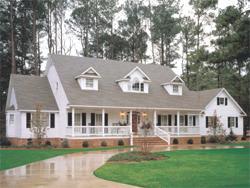COVID May Shift Preferences for the Home, Reports Builder Online
Washington, DC, June 15, 2020-The pandemic may shift design trends and buyer preferences for residential spaces, reports Builder Online.
“Early evidence would seem to suggest that buyers are developing new priorities for their homes. Google search trends for ‘home office,’ ‘home gym,’ and ‘healthy home’ have remained high since the start of the pandemic, and respondents to a survey conducted by Realtor.com and Toluna Insight reported a growing fatigue with small spaces and a desire for outdoor space in their next homes.
“With the situation ongoing, it is hard to say what will definitively follow for new-home design trends once ‘normal’ conditions resume. Some predictions are based on the practical realities of shelter in place and others on the psychological impact of the viral threat. However, as home sales continue and construction remains an essential business, the homes built today will serve the needs of consumers for years to come.
“Here are a few things designers and other professionals are keeping in mind for the future:
1. The Home Office
Homes have served as offices, school spaces, gyms, and nearly full-time family shelters since about mid-March, and families have found it difficult to find the right space for each activity, or privacy for themselves. While opinions are divided on the fate of the open floor plan, dedicated and private spaces are likely to be more important for new buyers.
A home office space will likely be in high demand for the future, especially as some workers (and companies) shift to working from home full time.
Thanks to Zoom and other video platforms, Dwayne MacEwen, architecture principal and creative director at DMAC, notes a desire for office spaces that not only function well but also look good on camera. Considerations include lighting, fresh air, and tech infrastructure depending on user needs.
2. Multipurpose Spaces
For smaller homes with limited space, one room can be designed to serve multiple purposes.
3. Healthy and Antimicrobial Living
Health, safety, and wellness are expected to be more important to homeowners than ever before, especially as states begin to reopen. Product manufacturers are anticipating this new environment by highlighting antimicrobial home fixtures and finishes in their catalogs. These include the use of metal such as brass or copper, fabrics such as polyester or vinyl, or exterior coatings such as INOX’s new antimicrobial hardware finish.
Beyond antimicrobial protection, designers emphasize the importance of personal well-being as people spend more time indoors. Buyers will look for homes that are pleasant to spend long periods of time in.
Outdoor spaces have already become a higher priority for personal well-being, especially for first-time buyers moving from apartments without private outdoor space.
4. Tech Infrastructure
Designers anticipate not only an increased need for smart home technology, but also a need for that technology to be touchless, in order to reduce the spread of microbes.
5. Kitchen Focus
6. Aging in Place
Louis Delaware, co-founder of the Living in Place Institute, predicts a greater preference for in-home care for aging family members over nursing homes or assisted living in the years to come. As such, both he and LIPI co-founder Erik Listou believe that the pandemic will create a rise in demand for home accessibility features, including larger bathrooms, a greater smart home technology infrastructure, and the incorporation of personal hygiene (or bidet) toilets and seats.
Toilet paper shortages aside, personal hygiene toilets have been popular with home accessibility professionals for their ease of use and remote control options.”
